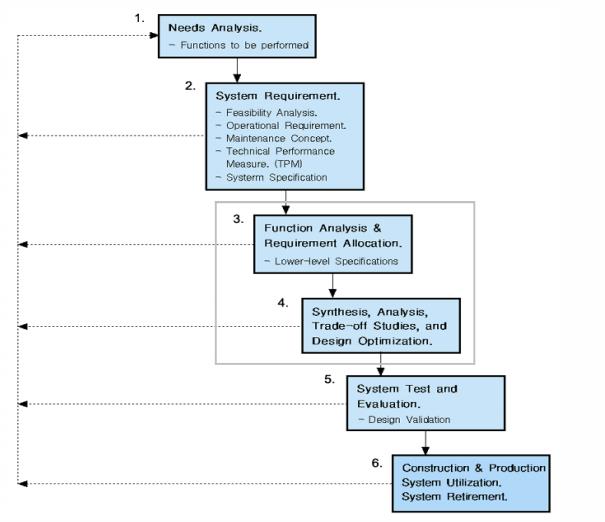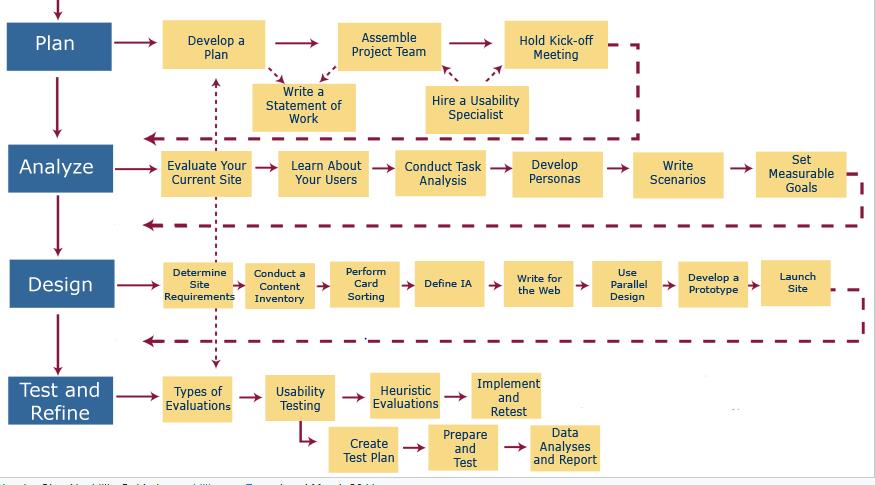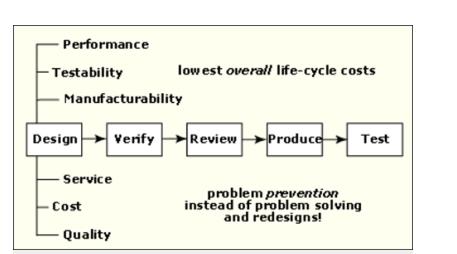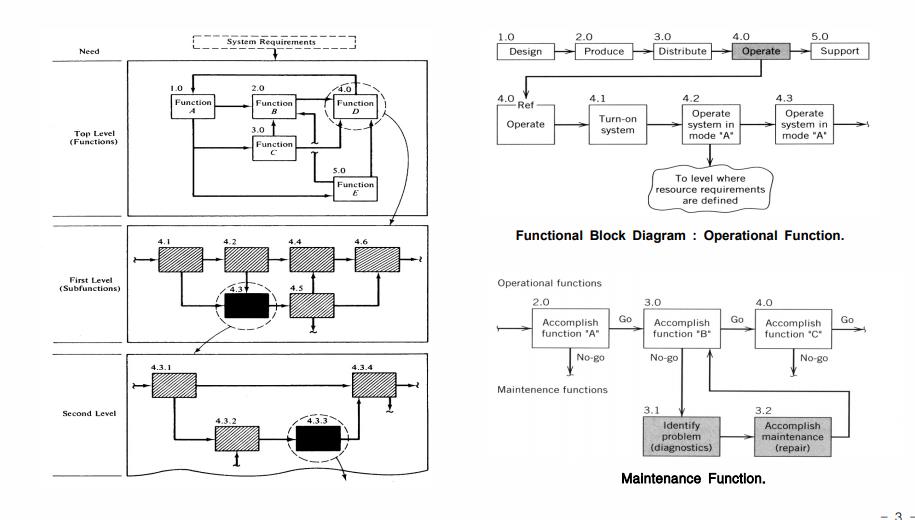Functional Analysis Assignment Examining The Process Of System Design
Question
Task: Prepare a report on functional analysis and functional allocation in the process of system design.
Answer
Introduction
The report presents the functional analysis assignment and allocation which is an integral element of the system engineering process. Functional analysis is the corresponding step after the designing of the system is achieved. Functional analysis helps in segmenting the process into various parts which are known as the functional element and along with that, it also describes the functioning of individual parts. The functional allocation is the next step after the functional analysis. Both of them are responsible for eliminating the differences between the various system level and is considered as an essential part of both the requirement loop and the design loop. In this report, a brief overview of the various processes is included in the functional analysis and allocation is discussed. Along with this, the ways and approaches for function allocation and analysis will also be done.
Overview of the FA&A process
Purpose: The main aim of functional analysis and functional allocation in the system design process involves the activities which would help in transforming the functional as well as performance interface into such a system which can easily be used as a guidance of the design synthesis activity which is done in correspondence. The system designer should know the requirements regarding the system such as the functions of the system, limitation of the constraints with in the designing of the system (Jackson, 2016). The function within the system are arranged in a local manner and decomposition of the functions takes place from higher level to lower level subsystems. The functional allocation is done from the higher to lower level systems.
Inputs: The inputs in the system designing are the requirement loop and design loop. During the functioning of the functional analysis, it is advised to make a list of requirements where the inputs would be listed. The inputs in the requirement loop consists of requirement analysis sheet, IDEF0 diagram and other various documentations, functional flow block diagrams and time analysis.
Outputs: The output consists of functional architectures and which refers to the top down segmentation of functional systems and the overall performance requirements. This briefly includes the functional descriptions of the current as well as government furnished elements. This also might require the reversal of certain components in system designing. The functional architecture is generated from the functional analysis and allocation. This basically includes the various diagrams and sheets such as requirement analysis sheet and functional flow block diagrams.
Staging: This includes the levels that supports in the translation of the system into detailed enhancement as well as the function designing criteria. The list of stages are given below
- Description of the system on the basis of function and segmenting them into sub systems
- Recognition of external as well as internal interfaces within the system
- Consideration of minutes details related to performance and functional activities
- Determination of the functional characteristics which are included in the directed system.
Approaches for functional analysis
Functional analysis is considered to be a fundamental tool for the operation of design, thereby exploring new concepts and defining their architectures (Jackson, 2016). System engineers perform functional analysis for refining the requirements of the original product. It also helps in mapping the functions of the products to physical components. It is done to ensure that all the necessary ingredients are listed in proper terms without the involvement of any unnecessary elements (Quigley, 2019). A 'function' indicates a particular or discrete action which is needed to be performed for achieving an intended objective (Laplante, 2017). In this sense, it can be said that the process of functional analysis is iterative as it involves the breaking of requirements down starting from the system level to that of the system. In a preliminary design, the entire process takes place in a hierarchical order for the identification of the criteria of input, unlike the conceptual model (Jackson, 2016). It also helps in the identification of constraints for the various parts of the system (Rebovich Jr and White, 2016).

Figure 1: Functional analysis in preliminary design
(Source: Jackson, 2016)
The approach of functional analysis discussed in this functional analysis assignment is intended towards decomposing the functions of the higher level to that of the lower-level. It is done through the identification of the functions in the requirement analysis (Rebovich Jr and White, 2016). Functional analysis in the preliminary design is done for assessing whether the system is operationally active or not. It is primarily done through the establishment of the allocated baseline of the system (Laplante, 2017). Functional analysis also depends on the features of the software implemented in the design. In this sense, it is necessary to follow specific approaches or methods for carrying out a functional analysis of a system. A design can be analysed to determine its usability, reliability and maintainability. In this context, it can be mentioned that the full range of approach included in functional analysis is system usability analysis, system reliability analysis and system maintainability analysis (Rebovich Jr and White, 2016). For carrying out these methods, the critical components are identified at first to measure their importance in the system design.
Design for Usability
The Design for Usability approach is intended towards improving the usability of a product or system. In this method, the users and their tasks are analysed for the identification of the user requirements (Rebovich Jr and White, 2016). Design is implemented for fulfilling the criteria followed in prototyping. At last the model is tested and evaluated to determine its usability. Usability refers to the measure of the extent to which the interactive user experience will be appropriate (Laplante, 2017). There are specific opportunities for testing the usability of a design. It can be done by checking the baseline usability of the product. Surveys and interviews can also help in establishing user goals. Card Sort can assist IA development. Navigation can be evaluated through wireframe testing (Laplante, 2017). Thus, these are some approaches mentioned in functional analysis assignment that can be taken to analysing the usability of a particular design.

Figure 2: Design for Usability
(Source: Rebovich Jr and White, 2016)
Design for Reliability
Design for reliability is regarded as a collection of ways or techniques which helps in the modification of the initial design of a system (Buede and Miller, 2016). It is done for the improvement of its reliability. Generally, in addressing the design for reliability, two approaches are used. The approaches are concerned with the prevention of problems or issues in the quality of the product (Rebovich Jr and White, 2016). In the reactive approach, the failures are identified with the help of root analysis of the system. After that, the proper action is implemented. The proactive approach is taken to avoid mistakes and failures. Thus, DFR or Design for Reliability is a process that helps in ensuring whether a product or process can perform an intended function within the allotted environment or not. It also provides that the product or system can deliver within the expected lifetime (Rebovich Jr and White, 2016).

Figure 3: Design for Reliability
(Source: Buede and Miller, 2016)
As seen in the above figure provided in this functional analysis assignment, the methods involved in DFR include designing, verification, review, produce and test. Through this entire process, the product is checked for its performance, manufacturability, testability, service, cost and quality (Buede and Miller, 2016).
Design for Maintainability
Maintainability is the extent to which a product or system can be maintained so that its parts can be replaced safely and easily (Rebovich Jr and White, 2016). Lack of maintainability can result in higher costs of maintenance and long times for servicing. In this sense, the approach of design for maintainability is taken so that the system or product can be evaluated for its maintainability. There are two types of maintenance activity in a product. It includes preventive maintenance and corrective maintenance or repair. Preventive maintenance is associated with the replacement of parts of a product. It involves the replacement of parts that may soon show failure. On the other hand, remedial maintenance or repair refers to the process in which the entire product is repaired as it has failed. Thus, it can be said that maintainability is one of the essential characters of a product bestowed by the design process.

Figure 4: Example of functional analysis in preliminary design
(Source: Pedrycz, 2016)
Approaches for functional allocation in this functional analysis assignment
Functional allocation is defined as the allocation of the requirement to a system for ensuring its usability, reliability and maintainability (Buede and Miller, 2016). In a preliminary design, the functional allocation involves a top-down approach in the distribution of both quantitative and qualitative means (Jackson, 2016). After associating the higher-level performance requirements with that of the lower-level performance requirements, the allocation is done. The higher-level requirements are allocated to lower functions.
On the contrary, the lower-level requirements are allocated to higher functions. This description is often referred to as the functional architecture of the product or the system (Chapman, 2018). Useful allocation is also regarded as task allocation. It determines whether a particular task can be accomplished by the components of a product or a system.
Reliability Allocation: Reliability Allocation is considered as the setting of reliability goals for a product or system based on the analysis of its requirements as per functional analysis. Reliability can be improved with the help of two approaches. These include fault avoidance and fault tolerance. Fault avoidance can be achieved with the use of high-quality components (Rebovich Jr and White, 2016). It should also be taken care that the components are highly reliable. In the other hand, fault-tolerance can be achieved with the help of redundancy. It can cause an increased complexity in the design as well as increased costs for weight and space (Jackson, 2016).
After establishing a proper reliability factor rate, it is allocated to the various systems and processes and units. Thus, the process of allocation by generating reliability block diagram. In equal apportionment method, equal reliability is allocated to all subsystems based on the requirements as per functional analysis. In ARINC Apportionment method, the rate of failure in the system is determined and then methods are established for estimation (Quigley, 2019).
Usability Allocation: Human factors mentioned in this functional analysis assignment such as perception, cognition and physical interactions tend to affect the physical architecture of the Design for Usability. The human factors are responsible for defining the effectiveness and efficiency of the design. The ease with it can be used depends on these human factors, thereby determining the satisfaction of users (Laplante, 2017). Usability of a product or system is based on the expectations of users. Formative evaluations are intended towards informing the development process. Cognitive walk-through indicates a walk-through for guiding the designing process for subjective input. Thus, usability allocation is greatly controlled by the human factors of designing. It includes the aesthetic factors influencing the product designs and its systems.
Maintainability Allocation: Maintainability is greatly dependent on three factors. These include the skills available for maintaining the software or product, the technical features of the product or system and the requirements engineering. It is of utmost importance that a proper goal is set so that the resources can be allocated in proper terms for the maintenance of the system (Buede and Miller, 2016).
Thus, FA&A plays a vital role in ensuring the efficiency of a specific design of a system. It ensures that all the areas of system design are analysed and the elements or components are fully recognised. It is also effective in determining the extent to which the component parts are efficient in terms of their usability, reliability and maintainability (Pedrycz, 2016). It can be regarded as a means for providing the proper concept of system packaging, thereby supporting the requirements in accordance with the specific functions of the system. In other words, it helps in providing a good and efficient functional design (Buede and Miller, 2016).
Conclusion
Functional analysis and allocation performed in this functional analysis assignment are of great importance in the system designing and helps in eliminating the issues that exists between the various levels in system. The functional architecture helps in supporting the synthesis of solutions with respect to people, products and services. Along with tis, it has also assisted in identification of attendant risk and is considered as an iterative process. The detailed discussion regarding the various type of functional allocation supports in ensuring the efficiency of the design system. Functional analysis aids in supporting the system which offer reliability, enhanced usage and maintainability.
References
Buede, D.M. and Miller, W.D., 2016. The engineering design of systems: models and methods. John Wiley & Sons.
Chapman, W., 2018. Engineering modeling and design. Routledge.
Jackson, S., 2016. Systems engineering for commercial aircraft: a domain-specific adaptation. Routledge.
Laplante, P.A., 2017. Functional analysis assignment Requirements engineering for software and systems. Auerbach Publications.
Pedrycz, W., 2016. Granular computing: analysis and design of intelligent systems. CRC press.
Quigley, J., 2019. An Evaluation of a Response Allocation Assessment as an Alternative to Current Functional Analysis Methodologies (Doctoral dissertation, The Chicago School of Professional Psychology).
Rebovich Jr, G. and White, B.E. eds., 2016. Enterprise systems engineering: advances in the theory and practice. CRC Press.












